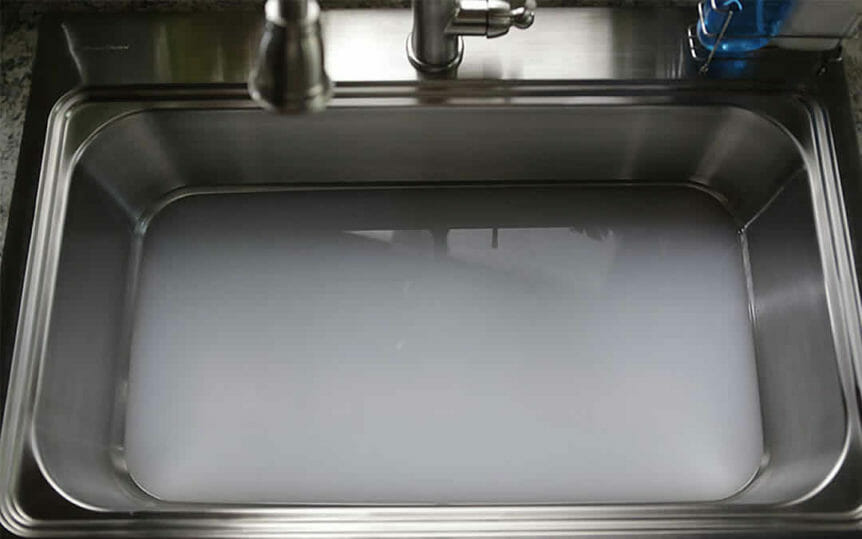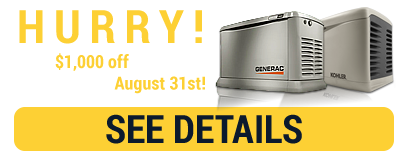
Signs Of Sewer Line Clogs And What To Do About Sewer Stoppages
Have you ever flushed the toilet and saw water appear in the shower drain? Or maybe you turned on the faucet at your sink and all of a sudden the water in your toilet started to bubble. If you have, these are signs of serious trouble. And if you have not, consider yourself lucky. Both of these situations are indicators that your main sewer line is backed up, and when this happens professional help is needed immediately.
All drains, toilets, bathtubs, showers, sinks, and the garbage disposal are connected to the main line of your house. And the main line runs all the way to the sewer that is managed by the city. It is the only way to rid your home of waste. It is important to keep your main line running efficiently because even the smallest stoppage can cause major problems.
“The main line brings everything from all locations in your house to the city, and in most cases it runs somewhere outside the master bathroom,” said John Moore Services Senior Operations Manager Joe Bany. “If your main line is backed up you will have problems in your master bathroom only. You may have a hard time flushing toilets, they may gurgle, and the tub may not drain. But there would be no signs in any other part of the house because there is room for the waste inside those pipes to travel.”
What causes Sewer Line Stoppages?
There are two common causes of stoppages in the main line, and the first is tree roots. The main line goes from your house, through your yard, and into the sewer. Typically it has to travel a good distance before it finally reaches the sewer, which leaves the pipe vulnerable to obstruction by tree roots. Roots are attracted to water, and it is not uncommon for them to break through the pipe to reach the water inside. Once this happens, there is no way for the waste inside the pipe to go around the root and things start to get backed up inside your home.
Another reason is the ground itself. Over time, the ground shifts and settles. This causes the pipe to move and creates high spots called bellies inside the line. Once a belly forms, waste and food starts to collect inside and creates a plug or stoppage.
How can I fix a stoppage in my main sewer line?
The first thing that has to be done when you have a stoppage is to determine if the clog is in the main line or if it is just a simple clog in a toilet or drain. And the way to figure this out is to count the clogs that are occurring. If the clog is in a fixture that is not in the master bathroom, then it is just a simple clog. And typically, if it is just a single clog in the master bathroom, then the problem is probably not inside the main sewer line. But if you have multiple stoppages in your master bathroom at the same time, that’s when you know there is a problem with your main sewer line.
“The way to fix a clog in your main sewer line is to find the line cleanout that is located somewhere in your backyard. It is a white plastic cap with a screw-on lid and is designed for easy access to the line,” said Bany. “Most all houses have them but the problem is trying to locate them. Many homeowners have been in their house a long time and are usually not the first family to live in it. And over time the landscape grows and changes and often hides or breaks the line cleanout.”
Once the cleanout is found, the next step is to snake the line to try and clear the stoppage. But if the problem is root growth, the line will need to be patched up or replaced.
How can I prevent stoppages?
- Use a professional strength drain maintainer like Plumbers Formula 5. It treats all drains and will prevent normal wear and tear. By using this solution on your drain lines, sinks, and tubs on a regular basis your plumbing will run more efficiently and last longer.
- If you have a guest bathroom that doesn’t get used very often, flush the toilet about once a week. This will keep the water flowing inside that line and will prevent stoppages.
- Always remember that the garbage disposal is for leftover food on plates only. It is okay to empty the remainder of food on a plate in the garbage disposal but never empty all the food left over inside a pot into the garbage disposal. Doing so will cause a clog.
- Once you use your garbage disposal, put the stopper on the drain and fill the sink up with water. Once it is filled about half way, remove the stopper. This will push all the food that is stuck in the line all the way through and will clear out the drain.
Stoppages in your main line can be messy, but if you take the right steps and maintain your drain lines you can prevent them from happening. But sometimes they will happen because of circumstances we cannot control, and when they do it is important to call in a professional and licensedplumber to come take a look. And the experts at John Moore Services would love to help! We can unclog any stoppage, fix all plumbing problems, and will always give you different options for fixing the problem. Next time you have a clog, give us a call!
